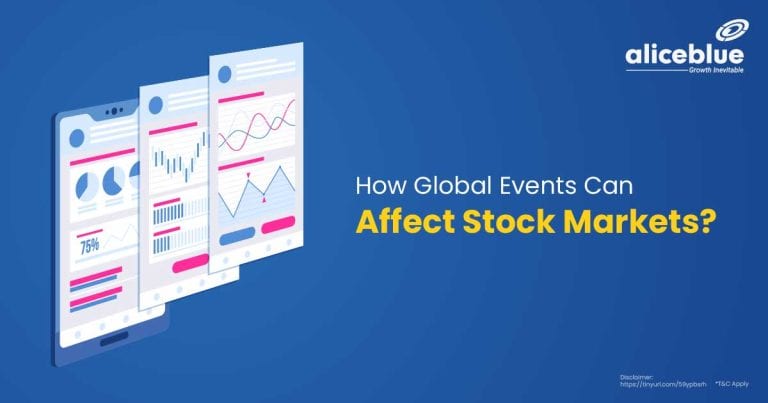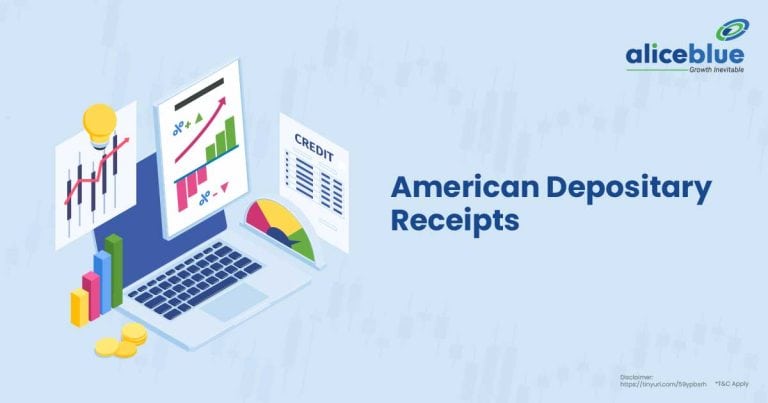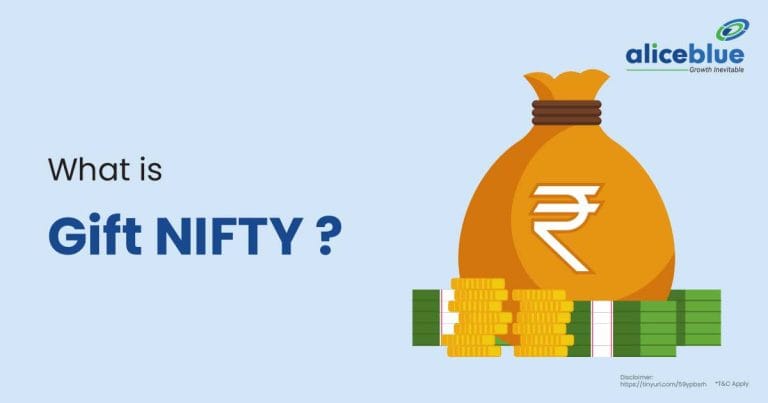The table below shows top-performing Cap Funds in 1 Year based on AUM, NAV and Minimum SIP.
| Name | AUM Cr. | NAV | Minimum SIP Rs. |
| HDFC Mid-Cap Opportunities Fund | 75,382.30 | 205.35 | 100.00 |
| Kotak Emerging Equity Fund | 50,601.84 | 151.27 | 100.00 |
| Nippon India Growth Fund | 30,838.94 | 4,430.01 | 100.00 |
| Axis Midcap Fund | 30,143.58 | 129.03 | 100.00 |
| SBI Magnum Midcap Fund | 21,127.45 | 266.55 | 1,500.00 |
| DSP Midcap Fund | 19,137.27 | 165.03 | 100.00 |
| Mirae Asset Midcap Fund | 17,454.59 | 39.08 | 500.00 |
| Motilal Oswal Midcap Fund | 12,627.68 | 114.57 | 1,500.00 |
| Franklin India Prima Fund | 12,529.29 | 3,048.09 | 500.00 |
| Sundaram Mid Cap Fund | 12,465.38 | 1,475.16 | 1,000.00 |

Introduction to Top Performing Mid Cap Funds in 1 Year
HDFC Mid-Cap Opportunities Fund
HDFC Mid-Cap Opportunities Fund is a Mid Cap Fund with an AUM of ₹75,382.30 Crores, a 5-year CAGR of 31.86% and an expense ratio of 0.72%, with an exit load of 1%.
HDFC Mid Cap Opportunities Direct Plan-Growth is an Equity Mutual Fund Scheme launched by HDFC Mutual Fund. This scheme was made available to investors on 10 Dec 1999. The fund allocates 92.1% to equity and 7.9% to cash, with no debt exposure, focusing primarily on equity with a moderate cash reserve for liquidity.
Kotak Emerging Equity Fund
Kotak Emerging Equity Fund is a Mid Cap Fund with an AUM of ₹50,601.84 Crores, a 5-year CAGR of 31.80% and an expense ratio of 0.34%, with an exit load of 1%.
Kotak Emerging Equity Fund Direct Growth is an Equity Mutual Fund Scheme launched by Kotak Mahindra Mutual Fund. This scheme was made available to investors on 05 Aug 1994. The fund’s asset allocation includes 95.5% in equity, 0.2% in debt, and 4.3% in cash, balancing high equity exposure with minimal debt and cash holdings.
Nippon India Growth Fund
Nippon India Growth Fund is a Mid Cap Fund with an AUM of ₹30,838.94 Crores, a 5-year CAGR of 32.91% and an expense ratio of 0.79%, with an exit load of 1%.
Nippon India Growth Fund Direct Growth is an Equity Mutual Fund Scheme launched by Nippon India Mutual Fund. This scheme was made available to investors on 30 Jun 1995. The fund allocates 97.3% to equity and 2.7% to cash, with no debt, emphasizing a strong equity focus and a small liquidity reserve.
Axis Midcap Fund
Axis Midcap Fund is a Mid Cap Fund with an AUM of ₹30,143.58 Crores, a 5-year CAGR of 28.03% and an expense ratio of 0.53%, with an exit load of 1%.
Axis Midcap Direct Plan Growth is an Equity Mutual Fund Scheme launched by Axis Mutual Fund. This scheme was made available to investors on 04 Sep 2009. The fund’s portfolio consists of 97.4% equity, 1.2% debt and 1.3% cash, offering high equity exposure with small allocations to debt and liquidity.
SBI Magnum Midcap Fund
SBI Magnum Midcap Fund is a Mid Cap Fund with an AUM of ₹21,127.45 Crores, a 5-year CAGR of 31.32% and an expense ratio of 0.78%, with an exit load of 1%.
SBI Magnum Mid Cap Direct Plan-Growth is an Equity Mutual Fund Scheme launched by SBI Mutual Fund. This scheme was made available to investors on 29 Jun 1987. The fund has 94.1% in equity, 0.5% in debt and 5.4% in cash, providing substantial equity investments alongside minimal debt and cash reserves for liquidity.
DSP Midcap Fund
DSP Midcap Fund is a Mid Cap Fund with an AUM of ₹19,137.27 Crores, a 5-year CAGR of 25.55% and an expense ratio of 0.70%, with an exit load of 1%.
DSP Midcap Direct Plan Growth is an Equity Mutual Fund Scheme launched by DSP Mutual Fund. This scheme was made available to investors on 16 Dec 1996. The fund’s asset allocation includes 97.3% in equity and 2.7% in cash, with no debt exposure, focusing primarily on equity investments with a small liquidity reserve.
Mirae Asset Midcap Fund
Mirae Asset Midcap Fund is a Mid Cap Fund with an AUM of ₹17,454.59 Crores, a 5-year CAGR of 31.84% and an expense ratio of 0.57%, with an exit load of 1%.
Mirae Asset Midcap Fund Direct-Growth is an Equity Mutual Fund Scheme launched by Mirae Asset Mutual Fund. This scheme was made available to investors on 30 Nov 2007. The fund allocates 98.6% to equity and 1.4% to cash, with no debt, emphasizing a strong equity-focused portfolio with minimal cash holdings.
Motilal Oswal Midcap Fund
Motilal Oswal Midcap Fund is a Mid Cap Fund with an AUM of ₹12,627.68 Crores, a 5-year CAGR of 35.92% and an expense ratio of 0.58%, with an exit load of 1%.
Motilal Oswal Midcap Fund Direct Growth is an Equity Mutual Fund Scheme launched by Motilal Oswal Mutual Fund. This scheme was made available to investors on 29 Dec 2009. The fund has 78.3% in equity, 16.4% in debt and 5.3% in cash, providing a balanced approach with significant exposure to both equity and debt, along with moderate liquidity.
Franklin India Prima Fund
Franklin India Prima Fund is a Mid-Cap fund with an AUM of ₹12,529.29 Crores, a 5-year CAGR of 26.77%, and an expense ratio of 0.94%, with an exit load of 1%.
Franklin India Prima Direct Fund Growth is an Equity Mutual Fund Scheme launched by Franklin Templeton Mutual Fund. This scheme was made available to investors on 19 Feb 1996. The fund holds 97.6% in equity and 2.4% in cash, with no debt allocation, offering a highly equity-concentrated portfolio with minimal liquidity reserves.
Sundaram Mid Cap Fund
Sundaram Mid Cap Fund is a Mid Cap Fund with an AUM of ₹12,465.38 Crores, a 5-year CAGR of 27.98% and an expense ratio of 0.91%, with an exit load of 1%.
Sundaram Mid Cap Fund Direct-Growth is an Equity Mutual Fund Scheme launched by Sundaram Mutual Fund. This scheme was made available to investors on 26 Feb 1996. The fund allocates 95.9% to equity, 0.4% to debt and 3.7% to cash, providing a strong equity focus with a small allocation to debt and cash for liquidity.
What Are Mid-Cap Funds?
Mid-cap funds are equity mutual funds that invest primarily in companies with medium market capitalization, typically ranked between 101 and 250. These funds offer a balance between growth potential and risk, providing investors with opportunities for higher returns compared to large-cap funds.
Features Of Top Performing Mid Cap Funds in 1 Year
The main features of top-performing Mid Cap Funds in 1 year include high growth potential, professional management, sector diversification and relatively lower volatility compared to small-cap funds. These features help in capitalizing on mid-sized companies’ growth.
- High Growth Potential: Mid-cap funds invest in companies that are past the initial growth stage but have the potential to become large-cap firms, offering significant returns during their expansion phase.
- Professional Management: Skilled fund managers select mid-cap stocks with growth potential and manage the risks associated with market fluctuations, optimizing returns for investors.
- Sector Diversification: Top-performing mid-cap funds often spread investments across diverse sectors, reducing the impact of underperformance in any one industry and balancing overall portfolio risk.
- Moderate Volatility: While mid-cap funds are more volatile than large-cap funds, they are less risky than small caps, offering a reasonable balance between risk and return for medium- to long-term investors.
Best Performing Mid Cap Funds in 1 Year
The table below shows Best Performing Mid Cap Funds in 1 Year based on Expense Ratio and Minimum SIP.
| Name | Expense Ratio | Minimum SIP Rs |
| JM Midcap Fund | 0.27 | 100.00 |
| Kotak Emerging Equity Fund | 0.34 | 100.00 |
| WOC Mid Cap Fund | 0.37 | 100.00 |
| Edelweiss Mid Cap Fund | 0.39 | 100.00 |
| Mahindra Manulife Mid Cap Fund | 0.43 | 100.00 |
| ITI Mid Cap Fund | 0.43 | 100.00 |
| PGIM India Midcap Opp Fund | 0.45 | 1,000.00 |
| Axis Midcap Fund | 0.53 | 100.00 |
| Baroda BNP Paribas Mid Cap Fund | 0.54 | 500.00 |
| Union Midcap Fund | 0.56 | 100.00 |
Top Performing Mid Cap Funds in 1 Year In India
The table below shows the top-performing Mid Cap Funds in 1 Year In India based on CAGR 3Y and Minimum SIP.
| Name | CAGR 3Y % | Minimum SIP Rs |
| Motilal Oswal Midcap Fund | 40.54 | 1,500.00 |
| Quant Mid Cap Fund | 35.99 | 100.00 |
| HDFC Mid-Cap Opportunities Fund | 32.06 | 100.00 |
| Mahindra Manulife Mid Cap Fund | 32.04 | 100.00 |
| Nippon India Growth Fund | 30.74 | 100.00 |
| Edelweiss Mid Cap Fund | 30.73 | 100.00 |
| ITI Mid Cap Fund | 28.95 | 100.00 |
| Invesco India Midcap Fund | 28.81 | 100.00 |
| Sundaram Mid Cap Fund | 28.63 | 1,000.00 |
| Kotak Emerging Equity Fund | 27.42 | 100.00 |
Top Performing Mid Cap Funds in 1 Year List
The table below shows the top-performing Mid Cap Funds in 1 Year List based on Exit Load and AMC.
| Name | AMC | Exit Load % |
| PGIM India Midcap Opp Fund | PGIM India Asset Management Private Limited | 0.50 |
| Quant Mid Cap Fund | Quant Money Managers Limited | 0.50 |
| JM Midcap Fund | JM Financial Asset Management Private Limited | 1.00 |
| Kotak Emerging Equity Fund | Kotak Mahindra Asset Management Company Limited | 1.00 |
| WOC Mid Cap Fund | Whiteoak Capital Asset Management Limited | 1.00 |
| Edelweiss Mid Cap Fund | Edelweiss Asset Management Limited | 1.00 |
| Mahindra Manulife Mid Cap Fund | Mahindra Manulife Investment Management Private Limited | 1.00 |
| ITI Mid Cap Fund | ITI Asset Management Limited | 1.00 |
| Axis Midcap Fund | Axis Asset Management Company Ltd. | 1.00 |
| Baroda BNP Paribas Mid Cap Fund | Baroda BNP Paribas Asset Management India Pvt. Ltd. | 1.00 |
Factors To Consider When Investing In Top Performing Mid Cap Funds in 1 Year
The main factors to consider when investing in top-performing mid-cap funds in 1 year include market conditions, fund manager expertise, expense ratio and risk tolerance. These factors influence the potential returns and suitability of the fund in your portfolio.
- Market Conditions: Mid-cap funds perform well during market upswings, but their performance can fluctuate. Understanding the broader economic environment is crucial when selecting mid-cap funds.
- Fund Manager Expertise: The success of mid-cap funds depends heavily on the fund manager’s ability to pick stocks with growth potential while minimizing risks in volatile market conditions.
- Expense Ratio: A lower expense ratio can enhance net returns. Compare the expense ratios of top-performing funds while also considering their long-term performance.
- Risk Tolerance: Mid-cap funds are more volatile than large-cap funds. Ensure your risk tolerance aligns with the potential for short-term losses while aiming for long-term growth.
How To Invest In Top Performing Mid Cap Funds in 1 Year?
To invest in top-performing mid-cap funds in 1 year, research funds based on past performance, expense ratio and the fund manager’s track record. Invest through platforms like Alice Blue using a lump sum or SIP approach, based on your financial goals and risk tolerance.
Advantages Of Investing In Top Performing Mid Cap Funds in 1 Year
The main advantages of investing in top-performing mid-cap funds in 1 year include the potential for growth, diversification, professional management and moderate risk. These funds strike a balance between high returns and controlled risk.
- Growth Potential: Mid-cap companies often exhibit high growth as they expand and develop, offering significant returns compared to large-cap stocks.
- Diversification: Mid-cap funds usually spread investments across various sectors, reducing risks and providing exposure to multiple industries with growth potential.
- Professional Management: Experienced fund managers carefully choose mid-cap stocks, analyzing growth prospects and minimizing risks through strategic selection and diversification.
- Moderate Risk: While more volatile than large-cap funds, mid-cap funds carry less risk than small-cap funds, making them suitable for medium-risk investors seeking growth.
Risks Of Investing In Top Performing Mid Cap Funds in 1 Year
The main risks of investing in top-performing mid-cap funds in 1 year include market volatility, liquidity risk, sector concentration and underperformance risk. These factors can influence the overall returns and increase the short-term risk profile of your investment.
- Market Volatility: Mid-cap stocks tend to fluctuate more during market ups and downs, making mid-cap funds sensitive to short-term market conditions.
- Liquidity Risk: Some mid-cap companies have lower trading volumes, which can make it harder to buy or sell shares without affecting the stock price.
- Sector Concentration: If a mid-cap fund is highly concentrated in a specific sector, poor performance in that sector could negatively impact the overall fund’s returns.
- Underperformance Risk: Mid-cap funds can underperform during bearish market phases, especially if mid-sized companies face challenges in scaling or competing with large companies.
Importance of Mid-Cap Funds
The main importance of mid-cap funds lies in their potential to balance risk and reward, diversify portfolios, offer exposure to growing companies and provide substantial returns over the long term. These funds are essential for investors seeking growth opportunities.
- Balanced Risk and Reward: Mid-cap funds offer a balanced approach between high-growth potential and moderate risk, making them attractive for medium-term investors.
- Portfolio Diversification: Including mid-cap funds in your portfolio provides diversification, helping to reduce overall portfolio risk by spreading investments across different sectors and companies.
- Exposure to Growing Companies: Mid-cap funds focus on mid-sized companies that have passed their initial growth phase and are likely to become industry leaders, providing strong growth prospects.
- Substantial Returns: Mid-cap funds offer opportunities for significant returns over the long term, making them an appealing option for investors aiming to maximize wealth creation.
How Long to Stay Invested in Mid-Cap Funds?
Staying invested in mid-cap funds for at least 5 to 7 years is ideal to benefit from their growth potential and ride out market volatility. Mid-cap stocks often experience short-term fluctuations but long-term investment helps capture significant growth.
However, the exact investment horizon depends on your financial goals and market conditions. Regular portfolio reviews and adjustments ensure your mid-cap funds continue to align with your overall investment strategy.
Tax Implications of Investing in Mid-Cap Funds
Mid-cap funds are taxed as equity mutual funds. Short-term capital gains (for holdings under 1 year) are taxed at 15%. Long-term capital gains (for holdings over 1 year) above ₹1 lakh are taxed at 10%.
For long-term investors, mid-cap funds offer tax-efficient returns, as long-term capital gains are taxed favourably compared to other investment options. Monitoring your holding period helps optimize tax efficiency and maximize net returns.
Future of Mid-Cap Funds
The future of mid-cap funds looks promising, driven by the potential of mid-sized companies to grow into large caps. As the economy expands, mid-cap funds are likely to benefit from the increased growth and innovation in key sectors.
However, market volatility and economic conditions will play a key role in their performance. Investors should stay updated on market trends and fund performance to adjust their mid-cap fund holdings accordingly.

Top Performing Mid Cap Funds in 1 Year – FAQs
Mid-Cap Funds are equity mutual funds that invest in medium-sized companies, typically ranked between 101 and 250 in market capitalization. These funds offer growth potential with moderate risk compared to large and small-cap funds.
Top Performing Mid-Cap Funds in 1 Year #1: HDFC Mid-Cap Opportunities Fund
Top Performing Mid Cap Funds in 1 Year #2: Kotak Emerging Equity Fund
Top Performing Mid Cap Funds in 1 Year #3: Nippon India Growth Fund
Top Performing Mid Cap Funds in 1 Year #4: Axis Midcap Fund
Top Performing Mid Cap Funds in 1 Year #5: SBI Magnum Midcap Fund
Top Performing Mid Cap Funds in 1 Year based on AUM.
Best Performing Mid Cap Funds in 1 Year based on expense ratio include JM Midcap Fund, Kotak Emerging Equity Fund, WOC Mid Cap Fund, Edelweiss Mid Cap Fund and Mahindra Manulife Mid Cap Fund.
Top 5 Performing Mid Cap Funds in 1 Year #1: Motilal Oswal Midcap Fund
Top 5 Performing Mid Cap Funds in 1 Year #2: Quant Mid Cap Fund
Top 5 Performing Mid-Cap Funds in 1 Year #3: HDFC Mid-Cap Opportunities Fund
Top 5 Performing Mid Cap Funds in 1 Year #4: Mahindra Manulife Mid Cap Fund
Top 5 Performing Mid-Cap Funds in 1 Year #5: Nippon India Growth Fund
Top 5 Performing Mid Cap Funds in 1 Year based on 3Y CAGR.
Investing in top-performing mid-cap funds in 1 year can be rewarding but these funds are better suited for long-term investment horizons due to market volatility and the time needed to realize growth potential.
Yes, you can buy top-performing mid-cap funds in 1 year, but be mindful of market conditions and your risk tolerance, as these funds may experience higher volatility and perform best over longer periods.
We hope you’re clear on the topic, but there’s more to explore in stocks, commodities, mutual funds, and related areas. Here are important topics to learn about.
Disclaimer: The above article is written for educational purposes, and the companies’ data mentioned in the article may change with respect to time The securities quoted are exemplary and are not recommendatory.








